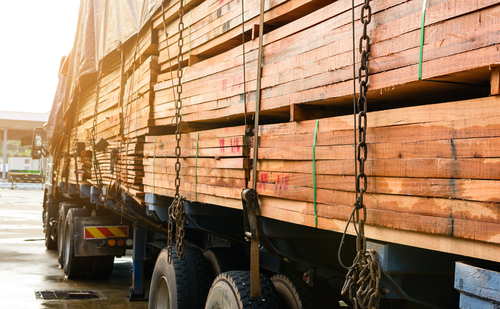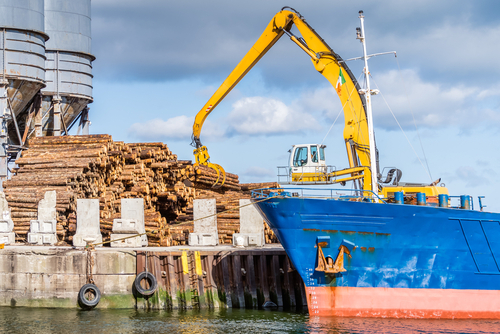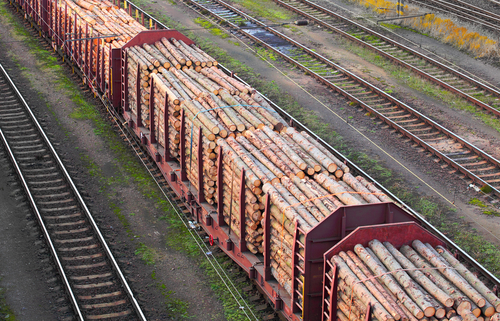Timber is an important resource for the construction and manufacturing industries, and it is also a popular material for furniture and other decorative items. Because timber is heavy and bulky, it can be difficult to transport it from one location to another. Indeed, it can be a long and winding road, but no need to worry!
There are a number of different ways to transport timber across Australia, and each has its own advantages and disadvantages.
One of the best ways to transport timber is by ship. Ships are large and can transport a lot of timber at once, making it the most efficient way to transport timber across Australia. However, shipping timber can be expensive, and it can take a long time to get the timber to its destination. Another way to transport timber is by truck.
Trucks are smaller than ships, and they can transport more timber at once. However, trucks are less efficient than ships, and they can be more expensive to use. Finally, timber can be transported by train.

For those interested in forestry research on background timber transport operations, here’s some important information:
Timber transportation operations is a valuable commodity in Australia, and it is transported a great deal by ship. The timber industry is a big part of the Australian economy, it handles things from food to industry and everything between. Which of course, it is also possible due to using the forest landscapes of Australia, and so it is responsible for a lot of jobs. The timber industry is also important for the environment, because it helps to keep the forests healthy.
There are a few different ways that timber is transported by ship. The most common way is to load the wood onto the ship and then transport it to the port where it is going to be shipped. This is the most common way that wood is transported, and it is the most efficient way to do it.
Another way that timber can be transported is by sea. This is less common, but it is possible. The timber is loaded onto the ship, and then it is transported to the port where it is going to be shipped. This method is less efficient than the other way, because it takes more time to get the timber to the port from the forest.
There are also a few different types of ships that are used to transport timber. The most common type of ship is the cargo ship. Cargo ships are used to transport a lot of different types of cargo, and they are usually very large ships. The second most common type of ship is the tanker. Tankers are used to transport oil, gas, and other types of liquids. They are usually very large ships, and they are used to transport timber as well often from forest ports.
The last type of ship that is used to transport timber is the bulk carrier. Bulk carriers are used to transport a lot of different types of cargo, but they are usually used to transport grain and other types of cargo. They are usually very large ships, and they are used to transport timber as well. Timber is a valuable commodity, and it is transported a lot by ship.
The most common way to do it is to load the timber onto the ship and then transport it to the port where it is going to be shipped. This is the most efficient way to do it, and it is the most common way that timber is transported. Forestry as it is, is large and hard to move so, a ship may be a potential solution.

Truck timber transport in the forestry business is a popular and cost-effective way to move large quantities of lumber. The benefits of using truck transportation include the ability to move large quantities of lumber quickly and easily, as well as the low cost of trucking. There are several factors to consider when selecting a trucking company to transport your lumber.
The type of truck you need, the size of the load, the distance you need to transport the lumber, and the price of trucking all play a role in determining which company is the best fit for your needs. Consider the company's agreed routes map and how it coincides with your business. When choosing a trucking company, it is important to consider the type of truck they use. Trucking companies typically use a variety of different types of trucks, including flatbed trucks, tanker trucks, and dump trucks. The size of the load will also affect what you need in your timber transport truck. .
For example, a load that is smaller than a dump truck will need a flatbed truck, while a load that is larger than a dump truck will need a tanker truck. The distance you need to transport the lumber will also affect the type of truck you need. It will also matter in inspections. For example, if you only need to transport the lumber a short distance, a dump truck will be sufficient.
If you need to transport the lumber a long distance, however, a tanker truck will be more appropriate. Another factor to consider when selecting a trucking company is the price of trucking. The price of trucking will vary depending on the type of truck, the distance you need to transport the lumber, and the time of year.
Overall, timber transport by truck is a popular and cost-effective way to move large quantities of lumber. When choosing a trucking company, be sure to consider the type of truck, the distance you need to transport the lumber, and the price of trucking.
Another potential hangup in truck use is the road itself. Can the roads from my site of business handle the bulk required?
How reliably can we get our product on the road?
What can you do in case of road work in your area?
To consider the road itself before beginning to move your products is indeed the road to success.

The forestry industry is one of the most important in the United States, and it’s no surprise that timber is transported by train. Timber is a heavy and bulky commodity, and it’s not easy to move it by truck or by air. Perhaps there are many difficulties in timber transport management, but rail transport may be the best option for moving large quantities of lumber. There are several reasons why rail transport is the best option for moving lumber.
First, it’s faster than trucking. Second, it’s less environmentally damaging than trucking. Third, it’s less expensive than trucking. And fourth, it’s less likely to be disrupted by weather conditions. Railroads have been transporting lumber for over a hundred years, and they’ve developed a lot of specialized equipment to handle the load. Most lumber is transported on flatcars, but sometimes it’s transported on boxcars or gondolas.
Lumber is usually shipped in bulk, but sometimes it’s transported in packages. A package is a lot like a box, but it’s smaller. A package usually contains one or two pieces of lumber. Lumber is usually transported by train from the lumber mills to the ports where it will be loaded onto ships. But sometimes it’s transported from the ports to the mills. The railroads that transport lumber are owned and operated by private companies.
But sometimes the railroads are owned and operated by the government. Safety and availability can be expected using this mode of transport. The railroads that transport lumber are always looking for ways to reduce the amount of time it takes to move the lumber from the mills to the ports while maintaining safety.
They’ve developed special equipment that can move lumber faster than traditional methods. And the railroads are always looking for ways to reduce the amount of money it takes to move the lumber from the mills to the ports. They’ve developed special relationships with the ports, and they charge lower rates for the lumber than the rates that would be charged if the lumber was transported by truck. The lumber industry is one of the most important in the United States, and it’s no surprise that timber is transported by train.
Rail transport is the best option for moving large quantities of lumber, and the railroads that transport lumber are always looking for ways to improve their services. One of few potential downsides to trains is the set schedule, consider this when making your choice to move away from the roads and onto the rails.

Many lumber companies are easy to contact in this day, and by using direct contact you can consult a professional on all available lumber transport services. There are also many transport stock illustrations, transport stock pictures and lumber stock pictures royalty-free photos, for those who have trouble conceptualizing the process. These transport stock photos come from real lumber companies and will give you a more effecting visual representation of things.
The timber industry in Australia is a vital part of the economy and has been for many years. Timber transport is a vital part of this industry and is an essential part of the timber supply chain. Timber transport is a complex and challenging process, and there are many factors that need to be taken into account when transporting timber.
The main factors that need to be considered when transporting timber are the weather conditions, the terrain, the transport route, the timber species and the weight of the timber. The weather conditions need to be taken into account when planning the transport route, as the terrain can be difficult to traverse and can be affected by weather conditions, such as flooding.
The transport route needs to be chosen carefully, as it needs to be able to accommodate the weight of the timber and the terrain. The timber species needs to be chosen carefully, as different species of timber require different transport methods.
Finally, the weight of the timber needs to be taken into account, as different types of timber can weigh different amounts. All of these factors need to be taken into account when transporting timber, and if they are not, the timber transport process can be very difficult and costly. However, with careful planning and execution, timber transport can be a successful and efficient process.